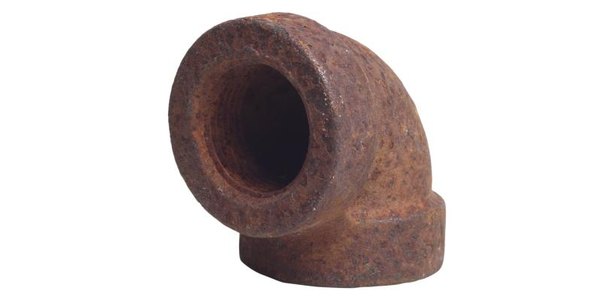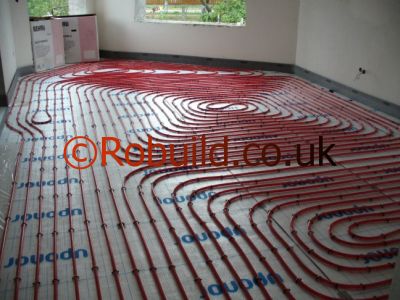Repairing leaking taps
Supataps
Changing the washer on this type of tap can be carried out in minutes, without the need to cut off the water supply first. Before you begin, check that you have a replacement Supatap washer and jumper unit. Once you’ve undone the retaining nut at the top of the nozzle you have to open up the tap fully — and then keep on turning. At first the flow will increase, but then, just before the nozzle comes off in your hand, a checkvalve inside the tap will fall into position and stop the flow.
You can separate the antisplash device, (containing the washer and jumper unit) from the nozzle by turning it upside down and tapping the nozzle on a hard surface — not a ceramic sink or basin. The washer and jumper unit then need to be prised from the anti-splash device — you can use a knife blade or the edge of a coin to do this. A new washer and jumper unit can then be snapped in. When reassembling the tap it’s necessary to remember that the nozzle has a left-hand thread and so has to be turned anti-clockwise to tighten it.
Repairing a poor seating
Sometimes a tap will continue to drip although you’ve changed the washer. This is usually because the valve seating has become scored and damaged by grit from the mains, so the washer can’t make a watertight connection. You can use a reseating tool to put the problem right. This entails removing the headgear after the water has been turned off, inserting the tool into the body of the tap and turning ittocutanew seating.
It won’t be worthwhile buying one of these tools for what is a once-in-a-lifetime job, but you may be able to hire one from a tool hire company. An alternative method, and certainly one that’s a lot easier, is to use a nylon ‘washer and seating set’. Again with the water supply off, the headgear and the washer and jumper are removed from the tap end and the nylon liner is placed in position over the seating. The jumper and washer are then inserted into the headgear, which is screwed back onto the tap. The tap handle is then turned to the off position. This action will force the liner into and over the old seating to give a watertight joint. You can’t, of course, use one of these sets to reseat a Supatap. You can also use a domed washer to cure a poor seating.
It increases the surface area in contact with the waterway and so effectively cuts off the flow when the tap is turned off even though the top of the valve seating may not be smooth. Repacking a gland This is necessary when you turn the tap on and water bubbles up the spindle towards the handle. At the same time the tap can be turned on and off far too easily — you might even be able to spin the handle with a flick of the fingers. This fault is a common cause of water hammer — heavy thudding following the closure of a tap or float-valve — that can result in damage to the plumbing system.
Leakage up the spindle is most likely to occur in rather old fashioned — but still very common — taps in which the spindle passes through a gland or ‘stuffing box’ filled with greased wool. It’s inevitable that water containing detergent will be splashed onto the tap and this may result in the grease being washed out of the gland. The leakage can also be created if you run a garden or washing machine hose from the tap. Fortunately, to make a repair you don’t have to cut off the water supply to the tap, but you must be able to get at the glandadjusting nut. This is the first nut through which the spindle passes.
Giving the gland-adjusting nut about half a turn may be enough to stop the leakage up the spindle, but eventually all the adjustment available will be taken up and you’ll then have to repack the gland. When the gland-adjusting nut has been unscrewed and removed, the old gland packing material can be taken out and replaced with knitting wool saturated with petroleum jelly. The wool is wound round the spindle and packed down tightly before the gland-adjusting nut is put back and tightened until the tap handle can be turned fairly easily but without any leaks occurring.
Replacing an O’ ring
Many modern taps have ‘0’ ring seals instead of a packed gland or stuffing box. If an ‘O’ ring fails the remedy is simply to undo the gland-adjusting nut, pick out the old ‘0’ ring and replace it with a new one. Leaks from taps with this fitting are rare. ‘O’ rings are also found at the swivel point of many mixer taps and if a leak occurs here you have to remove the spout to make the change – but this is usually only held with a grub-screw. Older Supataps aren’t fitted with an ‘O’ ring seal but if water leaks from the top of the nozzle you can fit a ring round the valve casing. Modern Supataps have an ‘0’ ring already fitted and if it needs replacing, it’s a simple matter of slipping it off and pushing on another — but choose one that fits snugly and doesn’t move about. If this doesn’t cure the leak you’ll have to replace theanti-splash device which could have become worn.






